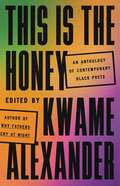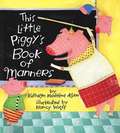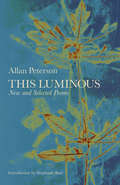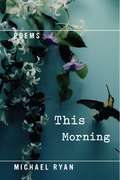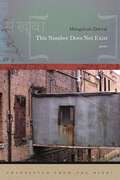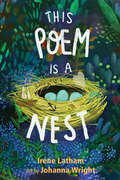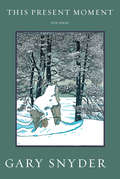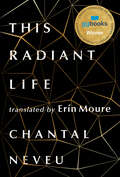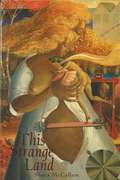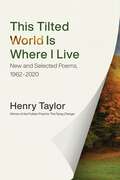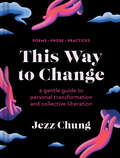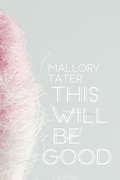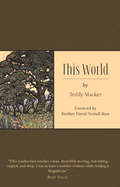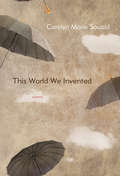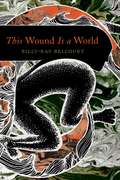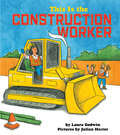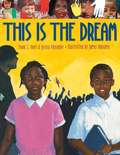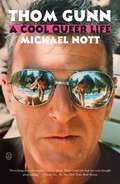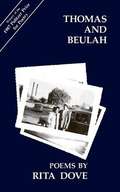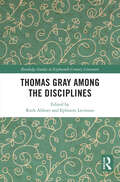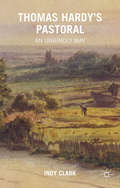- Table View
- List View
This Is the Honey: An Anthology of Contemporary Black Poets
by Kwame AlexanderA breathtaking poetry collection on hope, heart, and heritage from the most prominent and promising Black poets and writers of our time, edited by #1 New York Times bestselling author Kwame Alexander. In this comprehensive and vibrant poetry anthology, bestselling author and poet Kwame Alexander curates a collection of contemporary anthems at turns tender and piercing and deeply inspiring throughout. Featuring work from well-loved poets such as Rita Dove, Jericho Brown, Warsan Shire, Ross Gay, Tracy K. Smith, Terrance Hayes, Morgan Parker, and Nikki Giovanni, This Is the Honey is a rich and abundant offering of language from the poets giving voice to generations of resilient joy, &“each incantation,&” as Mahogany L. Browne puts it in her titular poem, is &“a jubilee of a people dreaming wildly.&” This essential collection, in the tradition of Dudley Randall&’s The Black Poets and E. Ethelbert Miller&’s In Search of Color Everywhere, contains poems exploring joy, love, origin, race, resistance, and praise. Jacqueline A.Trimble likens &“Black woman joy&” to indigo, tassels, foxes, and peacock plumes. Tyree Daye, Nate Marshall, and Elizabeth Acevedo reflect on the meaning of &“home&” through food, from Cuban rice and beans to fried chicken gizzards. Clint Smith and Cameron Awkward-Rich enfold us in their intimate musings on love and devotion. From a &“jewel in the hand&” (Patricia Spears Jones) to &“butter melting in small pools&” (Elizabeth Alexander), This Is the Honey drips with poignant and delightful imagery, music, and raised fists. Fresh, memorable, and deeply moving, this definitive collection a must-have for any lover of language and a gift for our time.
This Little Baby Goes Out
by Ann Morris Lynn BreezeParks and puppies, swings and snacks are waiting when This Little Baby Goes Out! Picture descriptions present.
This Little Pig-A-Wig And Other Rhymes About Pigs
by Lenore BlegvadA collection of poems about pigs for young readers.
This Little Piggy's Book of Manners
by Kathryn Madeline AllenSome little pigs remember their manners, and others do not. A humorous twist on "This Little Piggy Goes to Market" all about different kinds of manners that children remember, and also forget.
This Luminous: New and Selected Poems
by Allan PetersonPraise for Previous Work “Peterson is one of our most valuable poet-thinkers and thinker-poets, a writer who can show us how much is within our grasp and much is beyond it.”—LA Review of Books “His observing eye, as astute as the most finely honed telephoto lens, is such that he’s able to transform even the ordinary into something so exquisite it provokes wonder and awe.”—Mary Jo Bang “Like ‘Brazil’s undiscovered caverns of amethyst,’ Allan Peterson’s Fragile Acts is a major find.”—John Ashbery “He puts music to the tension between the desperate human experience and the cool removal of the cosmos. His poems are refreshingly discrete artifacts—perfected and edgy—raw at the same time.”—Laura Kasischke “Allan Peterson’s meditations on domestic tranquility and ecocatastrophe are so smart that they could actually make you smarter.”—Boston Review “Soul-poppingly magnetic.”—The Rumpus From the vast complexities of a world in which synesthesia is our natural translator, Allan Peterson’s poems convey the consistent message that the ordinary isn’t. Selected from books and chapbooks covering almost thirty years of writing, Peterson’s work draws heavily from landscapes like the Gulf Coast, the sciences, history, and the author’s background in visual arts. Details of perception and observation demonstrate why these reflective works, often dense with images and intuitive jumps, have received national and international recognition.
This Morning
by Michael Ryan"Unlike too many poets who tumble into print at the first twitch of feeling, Michael Ryan takes time to listen to himself, and such listening contributes immeasurably to the subtlety of his address to the reader . . . [He] reminds us on every page that poems can be about lives, and about them in ways most urgent and delicate." --William H. Pritchard, The Nation"The twin ancient powers of poetry are story and song," Michael Ryan said in a recent interview. "I like a lot of both." And both are here in This Morning in glorious abundance: graceful complex narratives and tight formal lyrics, edgy humor, affecting music, and insistent clarity always in the service of the heart. He can be deeply funny and extremely moving, often at the same time. No other living poet possesses Ryan's range of tone and technique in rendering the great subjects of art and life: sex, mortality, loss, and love (both conjugal and paternal). Even his most apparently autobiographical writing penetrates to the universal subject within it. Like Dickinson in her poetry, his personal life interests him primarily as an instance of human life. His artistic discipline is thus a spiritual discipline, and the vital spirit infusing these poems rises from the depths of isolation transformed by the joy of loving other people persistently and generously. This Morning is the work of a contemporary American master.
This Number Does Not Exist
by Mangalesh DabralAn attentive critique on contemporary reality—modernity, capitalism, industrialization—this first United States publication of Mangalesh Dabral, presented in bilingual English and Hindi, speaks for the dislocated, disillusioned people of our time. Juxtaposing the rugged Himalayan backdrop of Dabral's youth with his later migration in search of earning a livelihood, this collection explores the tense relationship between country and city. Speaking in the language of deep irony, these compassionate poems also depict the reality of diaspora among ordinary people and the middle class, underlining the big disillusionment of post-Independence India."Song of the Dislocated"With a heavy heart we lefttore away from the ancestral homemud slips behind us nowstones fall in a haillook back a bit brotherhow the doors shut themselvesbehind each one of thema room utterly forlorn Mangalesh Dabral was born in 1948 in the Tehri Garhwal district of the Himalayas. The author of nine books of poetry, essays, and other genres, his work has been translated and published in all major Indian languages and in Russian, German, Dutch, Spanish, French, Polish, and Bulgarian. He has spent his adult life as a literary editor for various newspapers published in Delhi and other north Indian cities, and has been featured at numerous international events and festivals, including the International Poetry Festival. The recipient of many literary awards, he has also translated into Hindi the works of Pablo Neruda, Bertolt Brecht, Ernesto Cardenal, Yannis Ritsos, Tadeusz Rozewicz, and Zbigniew Herbert. Dabral lives in Ghaziabad, India.
This Old Band
by Tamera Will Wissinger Matt LoveridgeWhat kinds of instruments would you imagine a band of cowboys playing? Surely nothing fancy, but they can still make do with what they have, like jugs, combs, boots, and whatever else they can find. Out on the open range, with no one to tell them to quit their hollerin', a cowboy band counts from ten to one in a tune children are familiar with. Silly phrases, toe-tapping rhythms, and the occasional twist make these cowpokes a great addition to any story time or bedtime lineup.Featuring a ragtag group of cowboys from author Tamera Will Wissinger, and colorful, offbeat illustrations by Matt Loveridge, This Old Band is sure to delight (and teach kids a few things about counting and noises) children and adults alike with a fun take on a popular nursery rhyme. A fun read-aloud for preschoolers and kindergarteners (ages 3 to 6), children will learn about various unusual instruments while learning the important skill of counting down from 10 to 1. Each page shows the number of band members that correspond with the number in the verse. Kids will be able to count them and also find hidden creatures throughout, making this an interactive story for bedtime, school, or anywhere. If parents or teachers are familiar with "This Old Man," they can even sing the book and teach it to their children for added interactive fun.
This Poem is a Nest
by Irene LathamA Kirkus Reviews Best BookAn NCTE Notable Poetry BookThis beautiful poetry collection introduces readers to the art of found poetry as the poet writes a 37-line poem, "Nest," then finds 160 smaller poems within it.What can you find in a poem about a robin's nest? Irene Latham masterfully discovers "nestlings" or smaller poems about an astonishing variety of subjects--emotions, wild animals, natural landmarks on all seven continents, even planets and constellations. Each poem is a glorious spark of wonder that will prompt readers to look at the world afresh. The book includes an introduction detailing the principles of found poetry and blackout poetry, and a section of tips at the end. The joyous creativity in this volume is certain to inspire budding poets.
This Present Moment: New Poems
by Gary Snyder"This present moment That lives on To become Long ago."For his first collection of new poems since his celebrated Danger on Peaks, published in 2004, Gary Snyder finds himself ranging over the planet. Journeys to the Dolomites, to the north shore of Lake Tahoe, from Paris and Tuscany to the shrine at Delphi, from Santa Fe to Sella Pass, Snyder lays out these poems as a map of the last decade. Placed side-by-side, they become a path and a trail of complexity and lyrical regard, a sort of riprap of the poet's eighth decade. And in the mix are some of the most beautiful domestic poems of his great career, poems about his work as a homesteader and householder, as a father and husband, as a friend and neighbor. A centerpiece in this collection is a long poem about the death of his beloved, Carole Koda, a rich poem of grief and sorrow, rare in its steady resolved focus on a dying wife, of a power unequaled in American poetry.As a friend is quoted in one of these new poems: "I met the other lately in the far back of a bar, musicians playing near the window and he sweetly told me "listen to that music. The self we hold so dear will soon be gone.""Gary Snyder is one of the greatest American poets of the last century, and This Present Moment shows his command, his broad range, and his remarkable courage.
This Radiant Life
by Chantal NeveuIn this stunning long poem, Chantal Neveu draws from the lexicons of science, art, revolution and corporeal movement to forge intense and extended rhythms that invoke the elements and spaces making up our world. This is poetry capable of holding life and death, solidarity and love. Renewal. Breathing. In its brevity and persistence, This Radiant Life is a material call for action: it asks us to let go, even just a little bit, of our individuality in favour of mutuality, to arrive separately yet in unison at a radiance in which all living beings can thrive.
This Radiant Life
by Chantal Neveu Er�n MoureWinner of the 2021 Governor General's Literary Award for TranslationFinalist for the 2021 Nelson Ball Poetry PrizeIn this stunning long poem, Chantal Neveu draws from the lexicons of science, art, revolution and corporeal movement to forge intense and extended rhythms that invoke the elements and spaces making up our world. This is poetry capable of holding life and death, solidarity and love. Renewal. Breathing.In its brevity and persistence, This Radiant Life is a material call for action: it asks us to let go, even just a little bit, of our individuality in favour of mutuality, to arrive separately yet in unison at a radiance in which all living beings can thrive.Governor General's Literary Award for Translation Jury Citation:“Moure has crafted a spectacular English poem in conversation with the French—a work channelling science, art, revolution and corporeal movement balanced in stillness and space. It is a thrilling space where meanings are amplified, beauty reverberates and the reader’s expectations are exceeded again and again. Moure advances new possibilities for both Neveu’s poem and translation itself.”—Peer assessment committee: Jonathan Kaplansky, Aimee Wall and Anne-Marie Wheeler
This Strange Land
by Shara MccallumThese poems probe the definition of Motherland. Shara McCallum homogenizes childhood memories of her native Jamaica with a revised understanding of danger and corruption, teasing out notions of history, language, motherhood, rupture, memory, and identity. She weaves new cloth of oral tradition, struggling to arrange a comfort zone within the foreign manufactures of suburbia. Hers is the skilled music of a master.
This Tilted World Is Where I Live: New and Selected Poems, 1962–2020
by Henry TaylorThis Tilted World Is Where I Live presents one hundred poems by Henry Taylor, drawing on over fifty years of published work by this witty, adept, and vital literary voice. The volume gathers seventy-five poems from previous books, including the Pulitzer Prize–winning The Flying Change, along with twenty-five more recent poems collected for the first time. Throughout his remarkable career, Taylor has worked in both traditional and open forms, avoiding rigid allegiance to either mode as he has responded to the world around him, from the horse farm in Virginia where he grew up, to the deserts around Santa Fe, New Mexico, where he now lives. In tones and moods ranging from grief to explosive hilarity, Taylor’s verse considers what we mean by loving one another, how violence can intrude without warning into innocent lives, and how the things we have always seen can change with the passage of time. This Tilted World Is Where I Live encapsulates the keen attention, vital humanism, and mastery of craft that have characterized a long and distinguished poetic career.
This Way to Change: A Gentle Guide to Personal Transformation and Collective Liberation—Poems, Prose, Practices
by Jezz ChungAn inspirational roadmap to changing yourself—and the world—through self-healing, transformation, and decolonization from artist, poet, and changemaker Jezz Chung.Artist, poet, and performer Jezz Chung (they/them) focuses on cultural change through personal transformation. In This Way to Change, Jezz shares contemporary poetry, accessible prose, and healing practices from different therapeutic modalities to explore subjects like healing your inner child, nourishing friendships, decolonizing your thinking, deconstructing binaries, and intentional community-making. The interactive healing practices in this book include writing and reflection prompts, somatic exercises, guided meditations, and more to help readers tap into their powers of self-healing on their journey through change.INSPIRING EXPERT AUTHOR: Jezz Chung has built a career as a thought leader and changemaker through their intersectional approach to equity, creativity, and well-being. Celebrated as a champion for diversity and inclusion and featured in such outlets as Adweek, Paper Mag, i-D, Teen Vogue, and The Folklore, they have a vibrant and ever-growing following on Instagram. They are an internationally recognized public speaker sought after not only for their commitment to change but for their practice of honesty and vulnerability.TRANSFORMATIONAL SELF-HELP BOOK: For readers hungry for self-help that inspires and doesn’t feel like homework, this deeply engaging guide will spark inspiration as well as introspection. The author is uniquely positioned to address several underrepresented themes and issues, like the strictures of the gender binary, AAPI experience, LGBTQ+ experience, and neurodivergence, making this a breakthrough volume in the self-help genre.GIFT BOOK FOR A WIDE AUDIENCE: Beautifully packaged and filled with inspiration, This Way to Change makes a powerful resource and empowering gift for readers of contemporary poetry, anyone interested in social justice, underground artists, and futurism, and those eager to explore new avenues of self-exploration and personal growth.Perfect for:Anyone interested in social justice, racial and disability issues, LGBTQIA+ and other marginalized identity issuesThose seeking guidance in alternative wellness, self-guided healing, intentional community building, and collective careAAPI readers interested in Jezz Chung’s Korean American perspective on identity, decolonization, and intergenerational traumaReaders of Self-Love Poetry, Heart Talk, and such bestselling authors as Alexandra Elle and Yung Pueblo
This Will Be Good
by Mallory TaterMallory Tater's This Will Be Good tells the story of a young woman’s burgeoning femininity as it brushes up against an emerging eating disorder. As the difficulties of her disease reveal themselves, they ultimately disrupt family relationships and friendships. These poems deftly bear witness to the performance of femininity and gender construction to reveal the shrinking mind and body of a girl trying to find her place in the world, and whose overflowing adolescent hope for a future will not subside.
This World
by Brother David Steindl-Rast Teddy MackerIn the lucid, melodic, various poems of This World, Teddy Macker returns us to the great mystery all around us, a mystery we so easily forget, the mystery of trout, the mystery of orchard, the mystery of our beautiful human bodies. Within these pages, Macker also chronicles the journey inside the whale, telling us not just of fear and trembling but also of the magnificent harps only found in the belly of the beast. By turns ecological, erotic, compassionate, and mystical, these poems return us to "this world, the kingdom we've been looking for."
This World We Invented
by Carolyn Marie SouaidThe world in Carolyn Marie Souaid’s latest collection is both an act of the imagination and a responsibility. Souaid’s poems zoom in and out, shifting focus to accommodate varied dimensions of experience. We move from the breakdown of a relationship to primordial ooze to a suicide bomb to a son doing his math homework. In a disarmingly personable voice, Souaid investigates our darker moments, faces up to losses and failures both intimate and public, often with wry humour. If our world is an imperfect invention, it is also, for Souaid, a source of wonder -- where “the trick was not to fall asleep but to notice everything / in its brevity.”
This Wound Is a World: Poems
by Billy-Ray BelcourtThe new edition of a prize-winning memoir-in-poems, a meditation on life as a queer Indigenous man—available for the first time in the United States &“i am one of those hopeless romantics who wants every blowjob to be transformative.&” Billy-Ray Belcourt&’s debut poetry collection, This Wound Is a World, is &“a prayer against breaking,&” writes trans Anishinaabe and Métis poet Gwen Benaway. &“By way of an expansive poetic grace, Belcourt merges a soft beauty with the hardness of colonization to shape a love song that dances Indigenous bodies back into being. This book is what we&’ve been waiting for.&” Part manifesto, part memoir, This Wound Is a World is an invitation to &“cut a hole in the sky / to world inside.&” Belcourt issues a call to turn to love and sex to understand how Indigenous peoples shoulder their sadness and pain without giving up on the future. His poems upset genre and play with form, scavenging for a decolonial kind of heaven where &“everyone is at least a little gay.&” Presented here with several additional poems, this prize-winning collection pursues fresh directions for queer and decolonial theory as it opens uncharted paths for Indigenous poetry in North America. It is theory that sings, poetry that marshals experience in the service of a larger critique of the coloniality of the present and the tyranny of sexual and racial norms.
This is the Construction Worker
by Laura GodwinYoung readers will delight in this step-by-step journey as a construction worker goes about her day on the job. With compelling details, vibrant color, and a driving rhythm, This is the Construction Worker builds up excitement as the high rise project in the illustrations grows taller and taller. Emphasizing teamwork and camaraderie, this story is a great read for home and the classroom, perfect for vehicle lovers and all young fans of busy activity!
This is the Dream
by Jessica Alexander Diane Z. ShoreWhen they started, it was all just a dream. Through striking, powerful verse and gorgeous, detailed illustrations, this is the dream catalogs the American experience before, during, and after the civil rights movement.
Thom Gunn: A Cool Queer Life
by Michael NottA no-holds-barred biography of the great poet and sexual rebel, who could “give the dead a voice, make them sing” (Hilton Als, The New Yorker). Thom Gunn was not a confessional poet, and he withheld much, but inseparable from his rigorous, formal poetry was a ravenous, acute experience of life and death. Raised in Kent, England, and educated at Cambridge, Gunn found a home in San Francisco, where he documented the city’s queerness, the hippie mentality (and drug use) of the sixties, and the tragedy and catastrophic impact of the AIDS crisis in the eighties and beyond. As Jeremy Lybarger wrote in The New Republic, the author of Moly and The Man with Night Sweats was “an agile poet who renovated tradition to accommodate the rude litter of modernity.” Thom Gunn: A Cool Queer Life chronicles, for the first time, the largely undocumented life of this revolutionary poet. Michael Nott, a coeditor of The Letters of Thom Gunn, draws on letters, diaries, notebooks, interviews, and Gunn’s poetry to create a portrait as vital as the man himself. Nott writes with insight and intimacy about the great sweep of Gunn’s life: his traditional childhood in England; his mother’s suicide; the mind-opening education he received at Cambridge, reading Shakespeare and John Donne; his decades in San Francisco and with his life partner, Mike Kitay; and his visceral experience of sex, drugs, and loss. Thom Gunn: A Cool Queer Life is a long-awaited, landmark study of one of England and America’s most innovative poets.
Thomas And Beulah: Poems
by Rita DoveStory told in poems of the African Amarican poet's grandparents' marriage, migration to Akron, Ohio in the first half of the 20th Century. <P><P> Pulitzer Prize 1987.
Thomas Gray among the Disciplines (Routledge Studies in Eighteenth-Century Literature)
by Ruth Abbott and Ephraim LevinsonThroughout the 250 years that have passed since Thomas Gray’s death, he has primarily been celebrated as a poet. This makes sense because, although he published relatively little verse, he published less – indeed, precisely nothing – of his abundant polymathic writing in other fields. His place within the history of scholarship has therefore been obscured. Like many eighteenth-century antiquaries, however, he shared his learning through correspondence and manuscript circulation and thereby influenced intellectual as well as literary life. This book explores Gray’s scholarship within the changing norms of eighteenth-century disciplines, at once locating him within histories of specialisation and examining the ways in which he challenges their narratives. Scholars from across the humanities reveal his methods and global interests and analyse many newly uncovered manuscripts. Offering fresh understanding of broader fields through focused investigation of Gray’s multidisciplinary writings, the book will appeal to scholars of eighteenth-century literary, intellectual, and scientific history.
Thomas Hardy's Pastoral: An Unkindly May
by Indy ClarkThis book reads Hardy's poetry of the rural as deeply rooted in the historical tradition of the pastoral mode even as it complicates and extends it. It shows that in addition to reinstating the original tensions of classical pastoral, Hardy dramatizes a heightened awareness of complex communities and the relations of class, labour, and gender.
